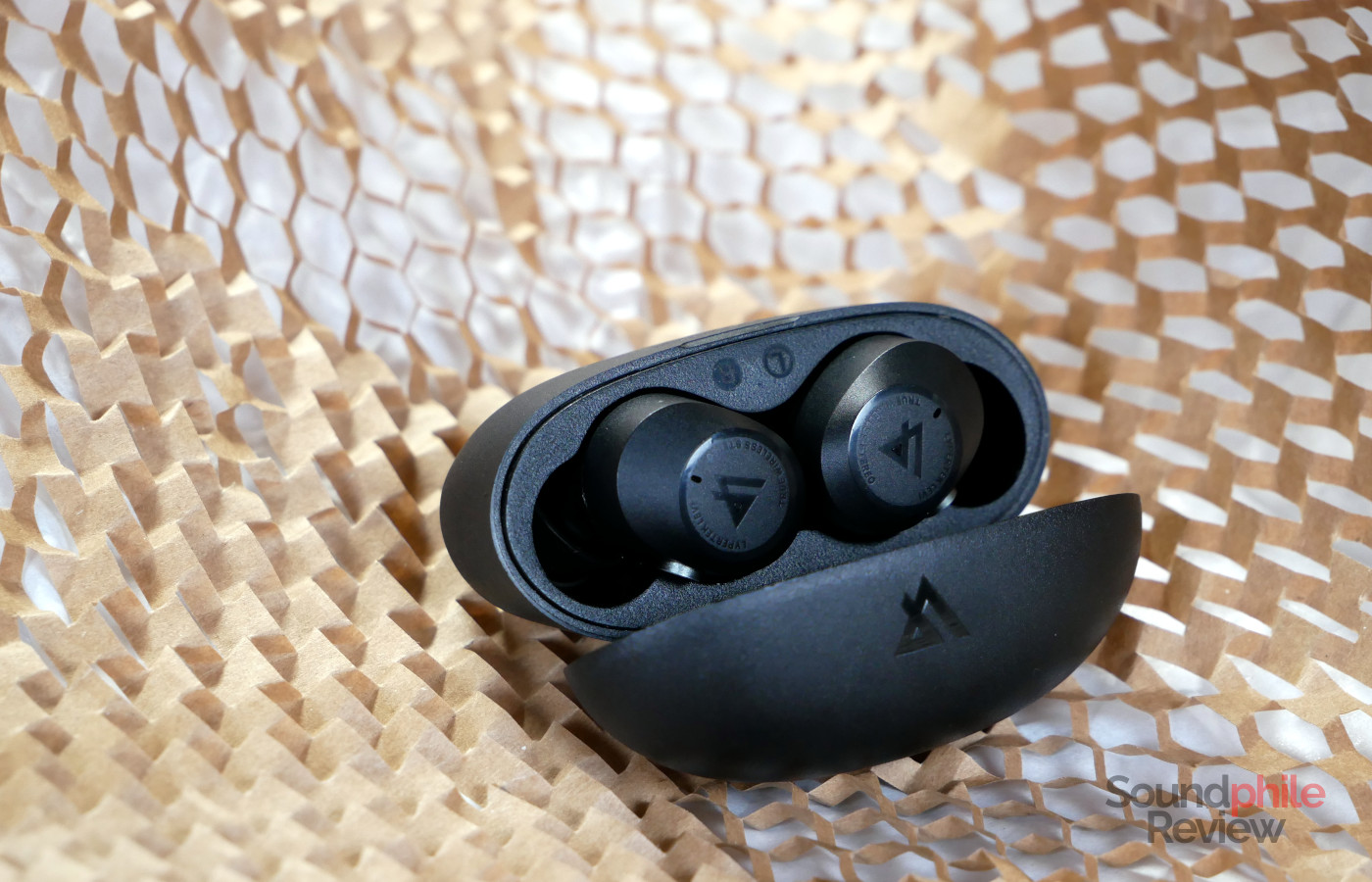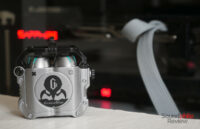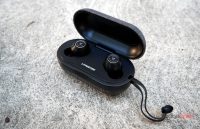Lypertek is back with a new set of earphones, this time even more affordable than the previous ones. The new Lypertek SoundFree S20 aim to replicate the success of the Tevi by offering the same ingredients – a balanced signature, good connection quality, good comfort – but at a lower price. It’s a difficult task indeed, given how well-regarded the Tevi are. How did they do in this regard? Let’s find out.
Disclaimer: KS Distribution provided me with a free sample for the purpose of this review. They sell the SoundFree S20 on HiFiHeadphones and on Amazon (US and UK) for £69.
TL;DR: recap
| Pros |
Cons |
| Light and comfortable
Excellent battery life Small, extremely portable case Balanced signature |
Technical ability is relatively limited
No high-quality codecs |
Rating: 8/10
Packaging & Accessories
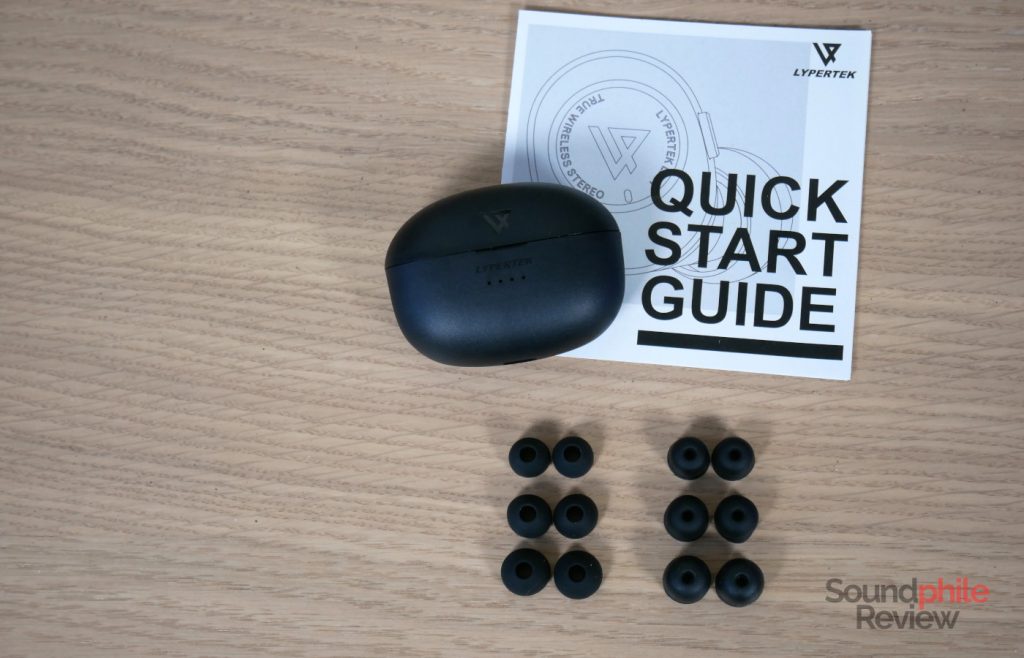
The packaging has stayed almost identical, with a cardboard box that has a transparent plastic window on the front. Inside it are the earphones, their matching charging case, a set of eartips (three sizes of single-flange tips and three sizes of double-flange tips) plus a manual. There’s a noticeable difference with the Tevi: there are no foam tips.
Design & Comfort
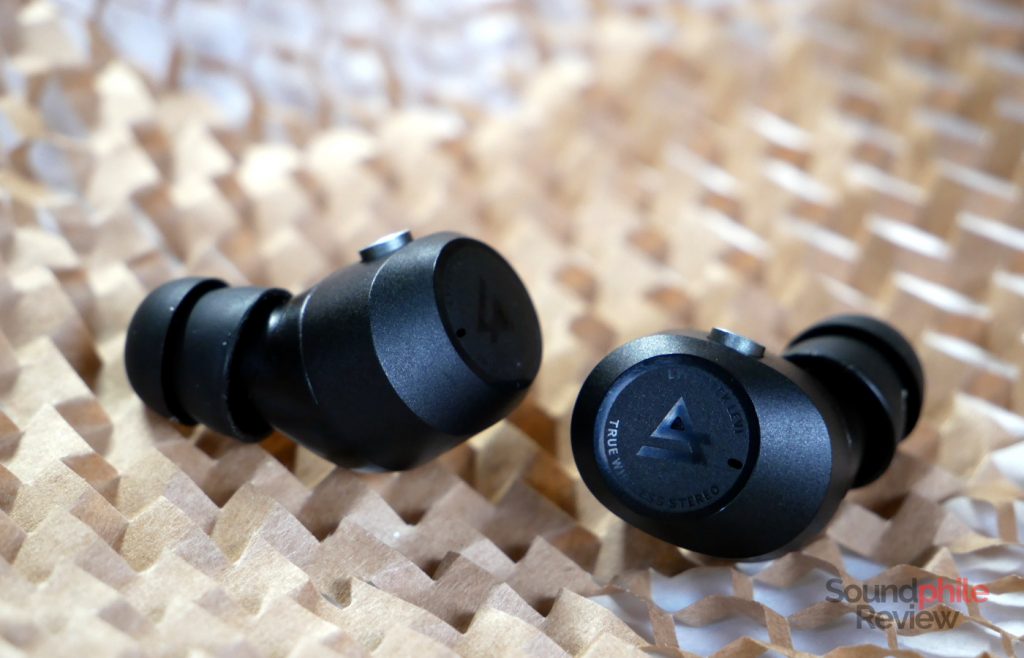
The design is similar to the Tevi’s, but it has its own unique identity. The SoundFree S20 are comparably large, with an oval shape and a nozzle that’s angled upwards and to the front. The faceplate has a circle with the Lypertek logo where the status LED and the microphone also are; it is then tapered until it meets the sides. On the top side there’s a button which is used to control the earphones. The shell is made of black plastic, glossy where it comes into contact with the ear and matte on the rest of the surface. Overall the SoundFree S20 look very, very good for sub-$100 earphones, with a design that’s modern and understated. I especially like the placement of the button, as you can press it without pushing the earpiece further into your ears.
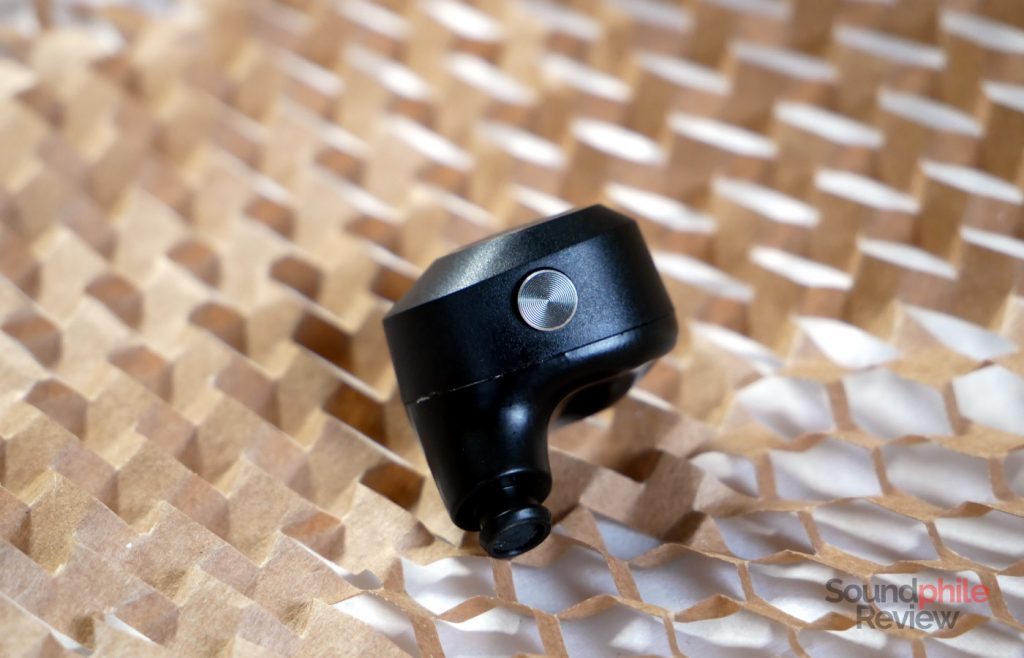
Build quality appears to be very good and mostly in line with that of the Tevi… which however are priced ~50% higher. There’s water resistance in the form of IPX5 certification, which guarantees that any physical activity or showers won’t damage the earphones. That comes in quite handy as it allows a certain flexibility in the usage of the earphones.
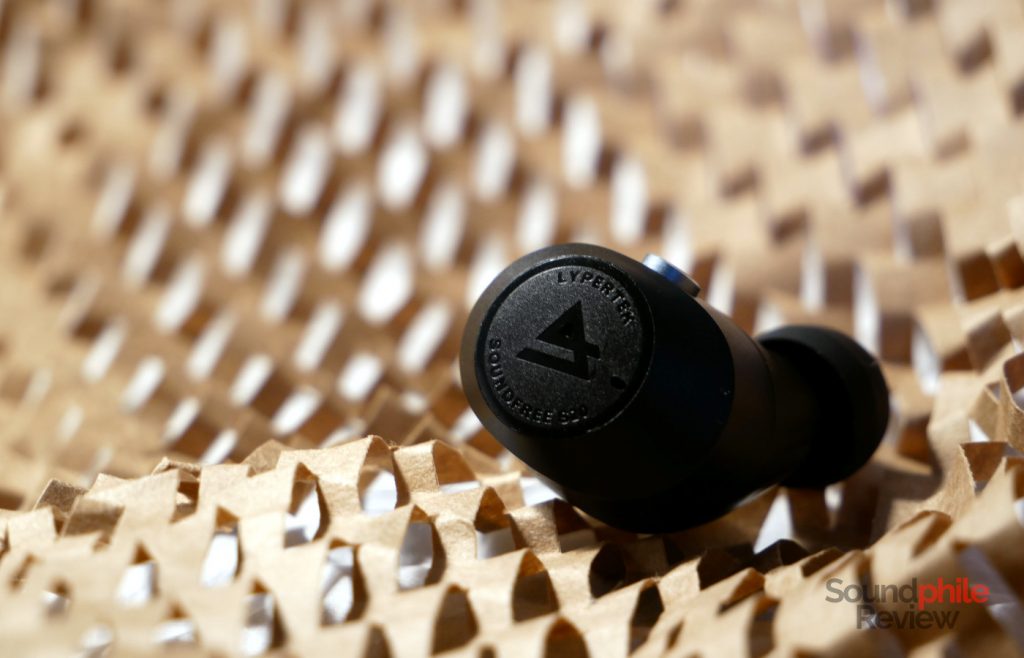
I found the SoundFree S20 to be less comfortable than their predecessors due to their size being larger. They’re large enough to push against my antihelix (the small curve just above the ear canal’s aperture), which makes them less comfortable in longer sessions. They’re quite fine in general and I can wear them for a couple of hours before needing to move them around a bit. Overall it’s a highly subjective matter, but due to the shape of the earpieces I guess that most people will find them more than decently comfortable like I do.
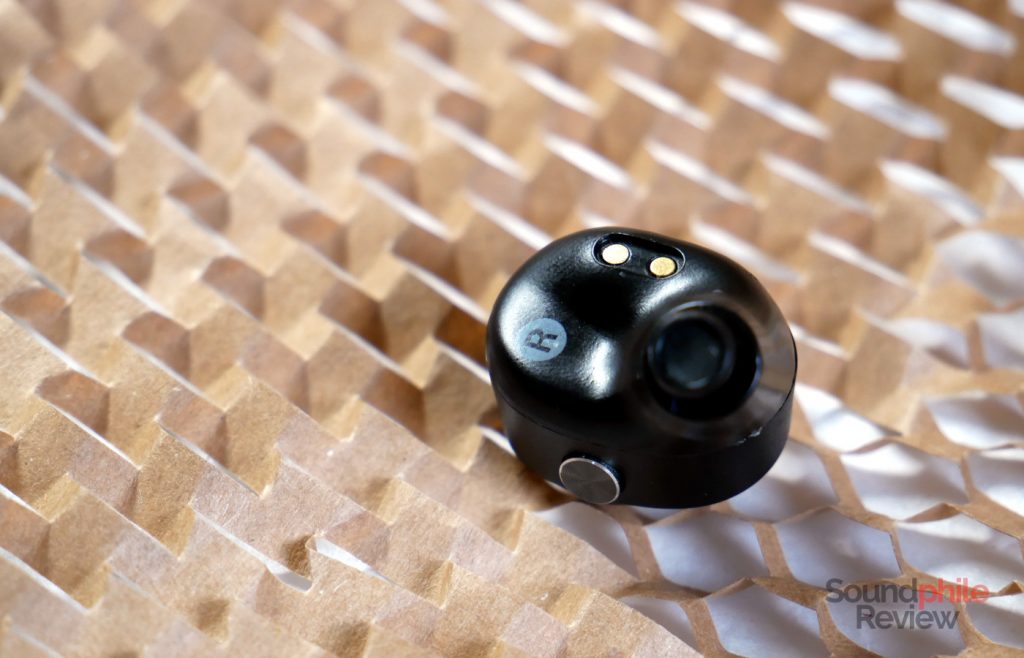
Even though Lypertek boasts “impressive passive noise isolation”, I found it to be average. Unless I pushed the volume up, the SoundFree S20 were not able to reduce noise from outside significantly even when using foam or SpinFit eartips. In fact I would say they’re not recommended if you want strong passive isolation.
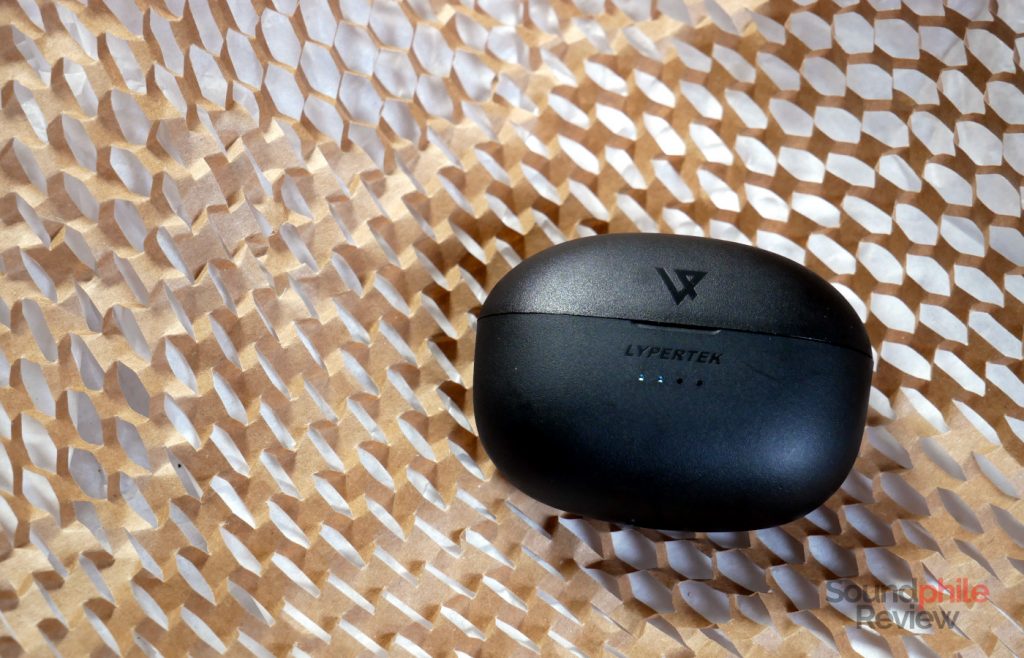
The case gets smaller and gains the ability to charge wirelessly using the Qi standard. It’s now small and lightweight enough you can easily forget it’s there if you put it in your pockets. It’s made with the same plastic as the earphones, which has the positive effect of making it more resistant to scratches and other damages – in fact it came out unscathed from a close encounter with my keys in my jacket’s pocket. On the front there’s a series of four LEDs that indicate the residual charge of the battery, while on the bottom there’s a USB-C connector. The lid has a magnet to keep it closed and also locks in place when opened, so it can be easily operated with just one hand.
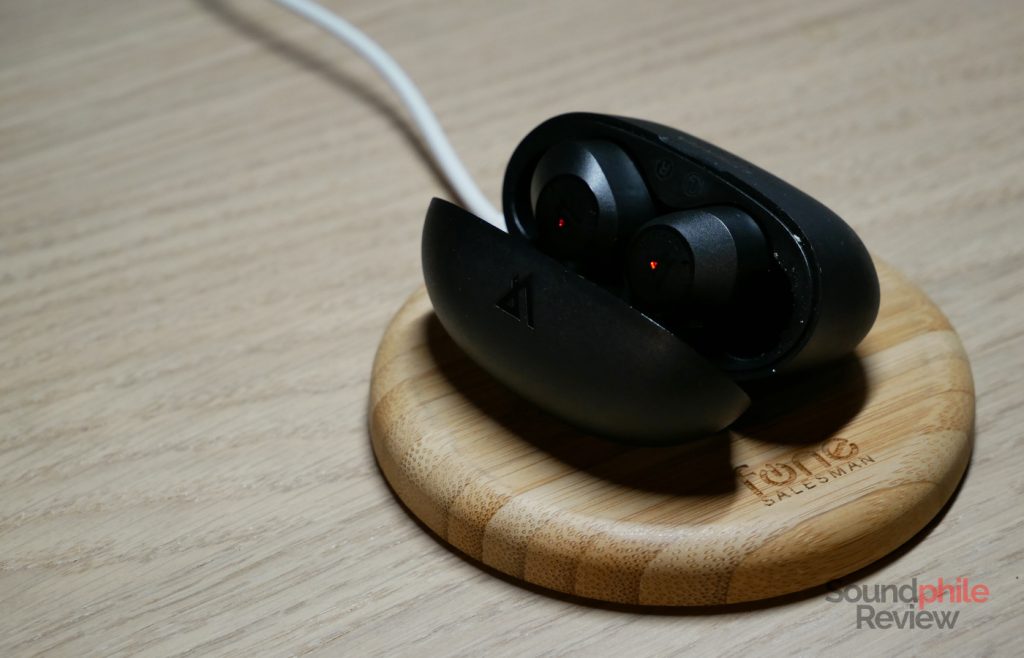
Extra Features & Battery Life
The Lypertek SoundFree S20 use the Bluetooth 5.0 standard but they are limited to the lower-end codecs, SBC and AAC. There are no higher-fidelity codecs such as aptX or LDAC as there were on the Tevi; this is a consequence of targeting a lower price point, and given the discount is significant (~30%) it’s also quite understandable that the feature-set is reduced. The range of the Bluetooth connection is good, with my highly scientific test (also known as “walk from the studio into the kitchen”) that shows a higher-than-average connection strength.
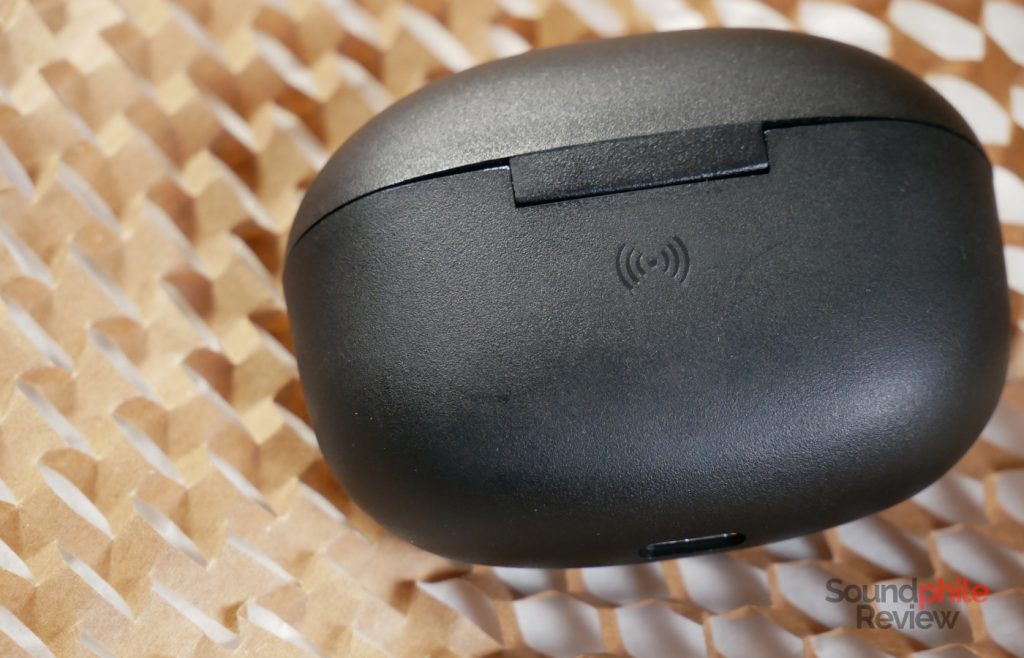
You can connect one earphone at a time in mono mode, and if you want to add the other one later you can do so seamlessly – you just have to take it out of the case. You can also adjust the volume right from the earphones by pressing and holding the buttons: the one on the left hand side reduces it, the one on the right hand side increases it. Other controls include standard things like play/pause (one press on either earpiece), previous or next (two presses), answer and end call (1 press on either earphone) or reject it (two presses). It’s also possible to enable the voice assistant with two presses or activate ambient sound with three quick presses.
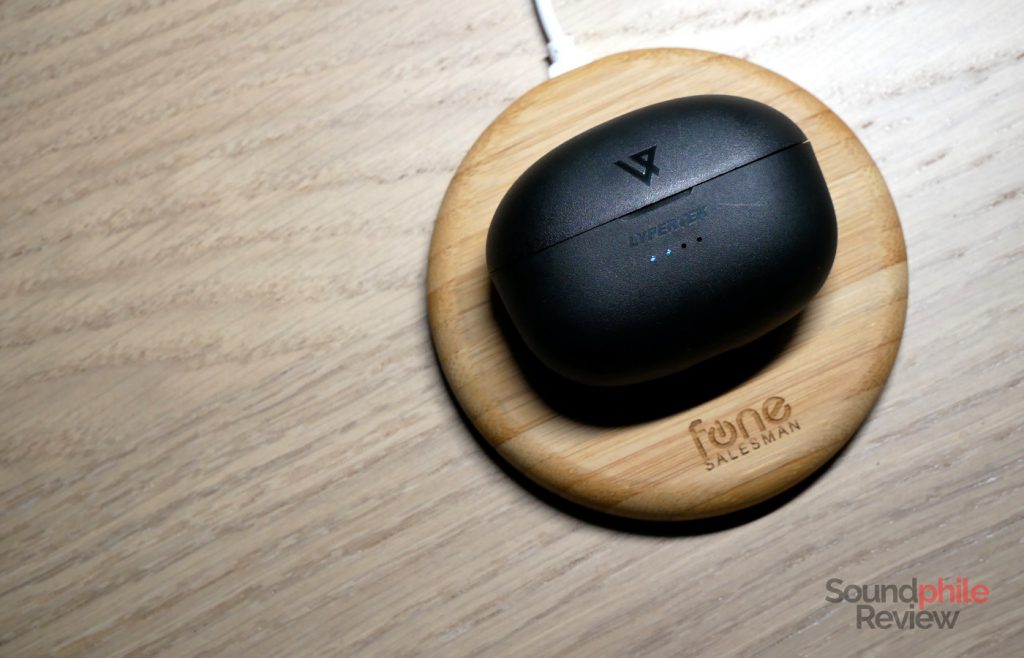
Lypertek boasts an 8-hour battery life for the SoundFree S20, but in my experience this is not the case and the right earbud (which may be faulty) has more like 5 hours of battery life. Apart from this issue, the SoundFree S20 are among the “true wireless” earphones with the longest battery life I’ve seen so far. The case should offer four additional charges that should bring the total to 40 hours, but in my experience it’s more like 3 charges for a total that’s around 30 hours. It’s still quite a good achievement, as it allows you to listen to music for three days without the need to be tethered to a wall charger. The charge of the case takes around two hours using a wireless charger and around 1:30 h using a wired one.
Sound & Specs
I tested the Lypertek SoundFree S20 mostly using my FLAC-loaded Shanling M2X.
Lypertek SoundFree S20
|
| Frequency response | 20 – 20,000 Hz |
| Impedance | N/A |
| Sensitivity | N/A |
| Bluetooth version | 5.0 |
| Codecs | SBC, AAC |
I found the SoundFree S20 to lack any background noise whatsoever. The background is pitch black, which is quite a welcome thing.
I found the soundstage to be quite amazing, especially for “true wireless” earphones. Not only is it is wide, but it also has some depth. It’s not comparable to open-back earphones, but it does have good width that surpasses my expectations of TWS earphones. Imaging is okayish, as it gives you a left-centre-right type of positioning that’s enough to give you an idea of what’s happening but that fails to convey precise positioning information. Instrument separation is actually decent, and even in complex tracks such as Snarky Puppy’s Chonks you can hear various instruments and distinguish between them; the lower end is where there’s less separation, while the midrange is where it shines the most.
It seems like Lypertek completely reimagined the sound signature for the SoundFree S20, going from a diffuse-field tuning to one more akin to the Harman curve. Bass is prominent and is front and centre in the scene, often being almost forward compared to the rest. Thankfully it’s not bloated or muddy, so the result is a warm lower region that’s actually enjoyable. The bass section delivers enough depth to almost touch the lowest notes, but it is mostly concentrated in the mid-bass area; the sub-bass is present enough in the mix to add that punch and immersivity to the sound that many look for. Detail is not the best feature of the bass and in fact it’s a bit lacking, but still enough to make everything sound right. There’s some physicality, but it’s limited and won’t rock your socks off – still, it’s quite good for TWS earphones. Speed is also acceptable, though I guess there’s a correlation between this and the relatively low level of detail.
I actually love the midrange on these. It’s lively and in the front seats, striking the right balance so that it’s really enjoyable but it’s not in your face. Lypertek pulled a great performance here, as they got the right balance between all the parts, without any specific one standing out too much or being recessed. This is true both on a general level and when looking just at the midrange. Speed is quite good, with drums that have a good attack and a relatively short decay that, combined with a good physicality, make them quite enjoyable. There’s a very good level of detail if the scene isn’t too complex as well, although as complexity grows the details appear to be smeared a bit for instruments not in the spotlight – but it still stays at quite a high level of proficiency. Even in a crowded track like Snarky Puppy’s Shofukan, everything stays (relatively) clear and clean, which is quite something at this price point.
Treble is decently rich and varied, thanks to the right mix of presence, detail and extension. The latter property in particular appears to me to be quite spot on, as it gives the music space and air while also giving instruments better depth. The level of detail is quite good overall, especially considering the price of the earphones: as a practical example, you can hear many small details in the cymbals section in Snarky Puppy’s What About Me? that highlight the good resolution of the SoundFree S20. Treble sits in a good place as it is mostly flush with midrange, so it’s forward enough to be audible but not to be fatiguing.
Lypertek SoundFree S20 Comparisons
I’m going to compare the SoundFree S20 to a couple of other true wireless earphones:
- Lypertek SoundFree S20 vs Lypertek Tevi: the Tevi are much more mid-centric and their signature is lighter as a consequence. The Tevi target a diffuse-field curve, whereas the SoundFree S20 appear to be more towards a Harman curve. The first difference between the two is bass: it is much more present on the SoundFree S20, which has similar depth but showcases it much more. The Tevi have a faster driver though, and so are able to showcase more detail in the lower area. As a consequence of the added bass presence, midrange is also less in the spotlight on the SoundFree S20; it’s also much less physical and fast, with drums being slower and less incisive, and detail seems to take a hit as well. Treble is a tad more present on the Tevi, which also display more details and better speed. Soundstage is wider on the Tevi, and generally imaging and instrument separation are also better. There’s no surprise here: the Tevi sound better. Comparing non-audio features, the case of the SoundFree S20 is smaller and includes wireless charging, while the Tevi are more comfortable to wear, have a longer battery life and offer the aptX codec. All in all, the SoundFree S20 appear to be quite competitive in their price range, but they’re no match for the Tevi.
- Lypertek SoundFree S20 vs dyplay Shield Pro ANC: the Shield Pro ANC appears to follow a somewhat similar curve, with some important differences however. Bass is similarly prominent, with sub-bass being further forward on the dyplay; detail is similar and so is speed, but the Shield Pro ANC have a bit more physicality. Midrange is more recessed on the dyplay, which have a warmer tone in general, and detail appears to be better on the SoundFree S20. Treble is comparable, but the SoundFree S20 has better extension which leads to a richer upper region. Soundstage is comparable, as the SoundFree S20’s is wider but the Shield Pro ANC’s is deeper. Non-audio features include a similarly-sized case, a longer battery life for the SoundFree S20 and the presence of ANC on the dyplay. Overall I prefer the SoundFree S20 for the sound, but the Shield Pro ANC for everything else.
Final Thoughts
As heirs to the Tevi, I had very high expectations of the Lypertek SoundFree S20. I expected more of the same, just in a more convenient package that traded high-quality codecs, battery life and some other conveniences for a more affordable price tag. That is indeed true, but there are some changes that make the SoundFree S20 quite a different beast compared to the Tevi. The sound signature is the one main change: the tuning is quite likeable and stays one of the highlights of Lypertek’s products, but it’s closer to the wide array of other U-shaped earphones on the market than to the previous products. The SoundFree S20 are quite likeable for their price range, but the comparison to the older, pricier model reveals that this is actually not “more of the same”. The song New Song by The Who comes to my mind, with its refrain “I write the same old song with a few new lines and everyone wants to cheer it” – well, it simply doesn’t apply here.
This difference is, of course, not bad in and of itself; on the contrary, it means that there’s more choice. It might be a bit of a let-down for those who were hoping to snatch a Tevi with fewer bells and whistles and a lower price tag, though. From an acoustic standpoint the SoundFree S20 are competent, well-made, highly likeable earphones with a lot to like and very little to dislike; looking at everything else, though, the limited codec choice and inferior technical ability make me think that you might want to consider saving a bit more and get the Tevi if you want something better in this regard. But this shouldn’t stop you from considering the SoundFree S20, because if you want something more immersive, with wireless charge and with more comfortable buttons, the SoundFree S20 are indeed a great option that offers much better sound quality than most competition at its price point.
One small note to wrap it all up: the first version of these earphones I received back in October 2020 was very different, as it had a few serious issues with connectivity, background noise and detail. All those issues were solved before the launch of the product that you actually find on the market now, so kudos to Lypertek for making such large improvements in such a (relatively) short time.

